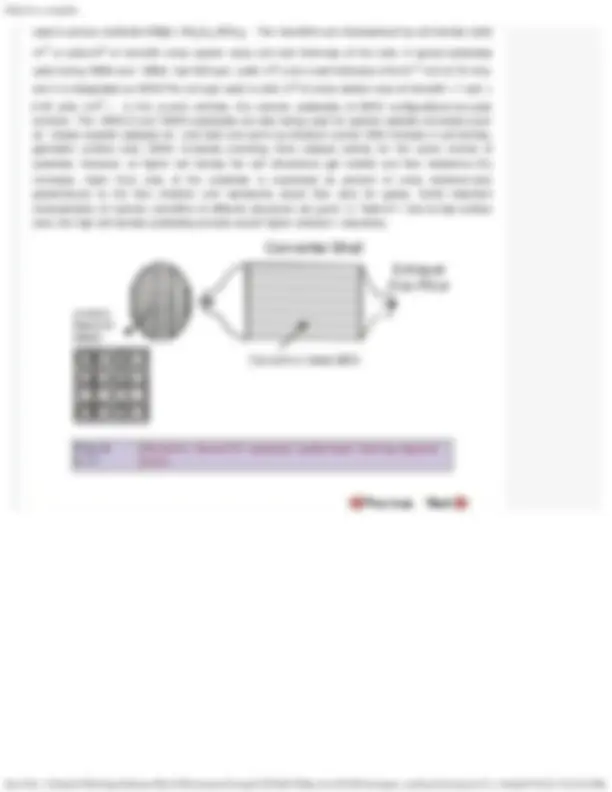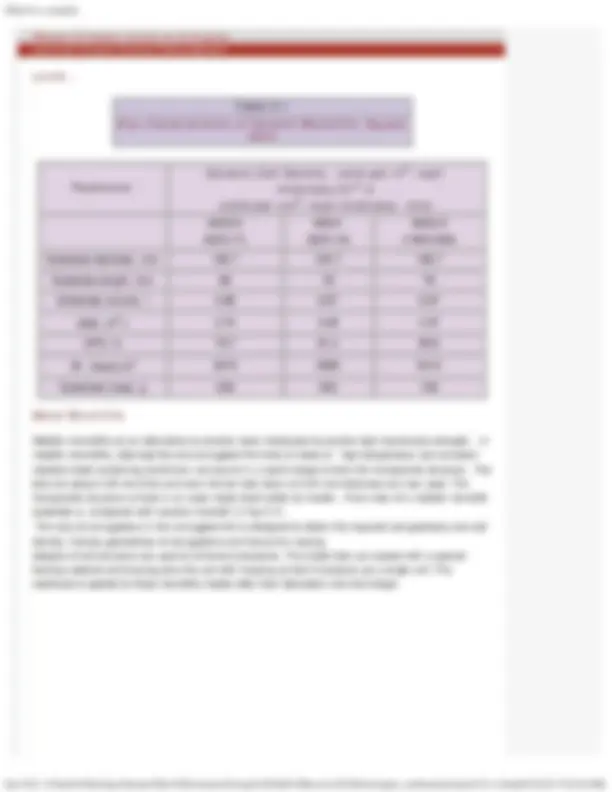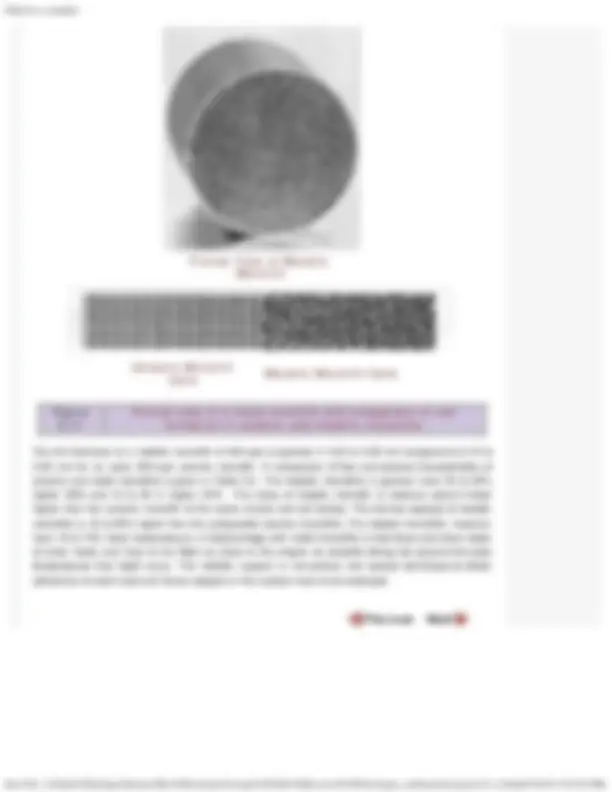










Study with the several resources on Docsity

Earn points by helping other students or get them with a premium plan


Prepare for your exams
Study with the several resources on Docsity

Earn points to download
Earn points by helping other students or get them with a premium plan
Community
Ask the community for help and clear up your study doubts
Discover the best universities in your country according to Docsity users
Free resources
Download our free guides on studying techniques, anxiety management strategies, and thesis advice from Docsity tutors
The major points are: Engine Exhaust Aftertreatment, Thermal Reactors, Catalytic Reactors, Catalyst Substrate, Palletized Catalysts, Metal Monoliths, Washcoat, Converter Housing, Space Velocity and Converter Size, Thermal Oxidation
Typology: Study notes
1 / 14

This page cannot be seen from the preview
Don't miss anything!









Improvements in engine design and adjustment of engine parameters carried to control engine emissions were inadequate to meet the first set of stringent emission regulations introduced in the USA from 1975. Devices were developed to treat exhaust gas for conversion of engine emissions to harmless gases. Conversion of pollutants present in the exhaust gas is termed as ‘exhaust aftertreatment’. Two basic types of exhaust treatment systems were considered;
Thermal reactors Catalytic reactors or converters
Initially, thermal reactors for oxidation of HC and CO to CO 2 and H 2 O were developed. However, as
high conversion rates of pollutants could not be obtained in the thermal reactors these did not find widespread application and very soon the catalytic converters became a standard exhaust aftertreatment device for the spark ignited engine vehicles.
If high exhaust gas temperatures are maintained and sufficient free oxygen is present in the exhaust gases, CO and HC can be oxidized in the engine exhaust system. Oxidation rate of HC can be estimated by an expression given in Module 2. Thermal conversion efficiency for HC and CO as a function of temperature is presented in Fig 5.9.
For 50% oxidation of CO and HC temperatures in excess of 500 and 600 C, respectively are required. For conversion of 80 percent, temperatures required are about 600 and 750º C for HC and CO, respectively. Residence time in reactor is another is another important variable. At 750º C, conversion of HC up to 90 percent may be obtained in 100 ms while at 850º C only 50 ms are required. Similarly, for 90 percent oxidation of CO 250 ms and 70 ms would be necessary at 750º C and 850º C, respectively.
The thermal reactor has to be located as close to the exhaust port as possible. In fact, the exhaust manifold is modified to act as thermal reactor. Exhaust manifold is made as a two wall design with an air gap in between to reduce cooling of the exhaust gases. Volume of the manifold is increased to increase residence time for the gases to undergo oxidation reactions. Engine is operated rich to obtain high exhaust gas temperature and secondary air amounting to 10 to 20% of air flow to the engine is injected at the port by an engine driven or electrical air pump. The rate of secondary air injection is controlled so that excessive cooling of the exhaust gas does not result which otherwise may chill out the oxidation reactions.
Oxidation of 1.0 percent CO in the gases increases gas temperature by about 145º C. Hence, with rich engine operation and secondary air injection sustained oxidation reactions of HC and CO occur giving higher conversion compared to lean engine operation when the starting temperatures are lower by about 100 C. Rich mixture operation and use of retarded ignition timing result in deterioration of fuel economy. Overall, the thermal reactors provide rather low conversion rates as during city driving conditions engine operates at part load and exhaust gas temperature are quite low. The thermal reactors have no effect on NO (^) x emissions.
Catalytic converters are now a standard fitment to SI engine powered vehicles. The exhaust gas flows over a bed of catalyst where pollutants are converted to harmless gases. The catalyst lowers the reaction temperature and hence high conversion rates are obtained compared to thermal reactors. A catalytic converter consists of the following main elements besides housing;
The active catalyst material is required to posses the following main characteristics
High specific reaction activity for pollutants High resistance to thermal degradation Good cold start performance, and Low deactivation caused by fuel contaminants and sulphur Other desirable requirements are low cost.
The oxides of base metals such as copper, chromium, nickel, cobalt etc. have been studied. The base metal oxides are effective only at higher temperatures. In addition, they sinter and deactivate when subjected to high exhaust gas temperatures experienced at high engine loads. Their conversion efficiency is severely reduced by sulphur dioxide produced by sulphur in fuel. The noble metals platinum (Pt), palladium (Pd) and rhodium (Rh) were found to meet the above mentioned performance requirements. In practice, only the noble metals are used although these are expensive. Mixtures of noble metals are used to provide higher reactivity and selectivity of conversion. Following are typical formulations;
Pt : Pd in 2:1 ratio for oxidation catalysts (Pt + Pd): Rh in ratio of 5 :1 to 10: 1 for simultaneous oxidation and reduction such as in 3-way catalysts
Palladium has higher specific activity than Pt for oxidation of CO, olefins and methane. For the oxidation of paraffin hydrocarbons Pt is more active than Pd. Platinum has a higher thermal resistance to deactivation. Rhodium is used as a NOx reduction catalyst when simultaneous conversion of CO, HC and NO (^) x is desired as in the 3-way catalytic converters.
The amount of noble metal used typically varies from about 0.8 to 1.8 g/l (25 to 50 g/ft3) of catalytic converter volume. For a passenger car the total amount of noble metal in the converter is typically in the range 0.8 g to 2 g. The active metal is in a highly dispersed state when impregnated on the surface of the catalyst support. The size of the noble metal particles on the fresh converter is about 50 nm. However, when used the noble metal particles sinter and may grow to a size of around 100 nm.
The active catalyst material is impregnated on the surface of catalyst substrate or support. The function of catalyst substrate is to provide maximum possible contact of catalyst with reactants. Following are the main requirements of catalyst substrate:
High surface area per unit volume to keep a small size of the converter Support should be compatible with coating of a suitable material (washcoat) to provide high surface area and right size of pores on its surface for good dispersion and high activity of the catalyst. Low thermal capacity and efficient heat transfer properties for quick heat-up to working temperatures. Ability to withstand high operating temperatures up to around to 1000º C. High resistance to thermal shocks that could be caused by sudden heat release when HC from engine misfire get oxidized in the converter. Low pressure drop Ability to withstand mechanical shocks and vibrations at the operating temperatures under road conditions for long life and durability of 160,000 km and longer
The following types of catalysts supports are used;
Pellets Monolithic supports
The first catalytic converters introduced in 1970s and used until early 1980s employed spherical ceramic pellets, which were packed in a catalyst bed. The pellets of 3 to 6 mm dia were made of γ- alumina (Al 2 O^3 ) The porous surface of alumina pellets provides a large surface area on which the noble metal
salts are impregnated to a depth of about 250 μm. The pellet catalysts are loaded with approximately 0.05% by weight of noble metals. A typical pellet type catalytic converter is shown in Fig 5.10. The gas flow through the packed bed pellet reactors is a mix of axial and radial flow so as to provide large flow area and reduce flow resistance. The gas flow through pellet bed is turbulent resulting in high mass-transfer rates. The packed bed catalysts suffer from the following disadvantages:
High pressure drop Are heavy, have high thermal inertia and hence slow to warm-up. Loss of catalyst from abrasion due to rubbing of pellets against each other.
Therefore during 1980s the ceramic honeycomb or metallic matrix monolith converters replaced the pellet type converters.
A ceramic monolith is shown schematically in Fig 5.11. It has parallel flow channels or cells of square or triangular cross section. The flow through these channels is laminar. The ceramic material commonly
used is porous cordierite (2MgO. 2Al 2 O 3 .5SiO 2 ). The monoliths are characterized by cell density (cells /in 2 or cells/cm 2 of monolith cross section area) and wall thickness of the cells. A typical substrates used during 1980s and 1990s had 400 cpsi (cells /in 2 ) and a wall thickness of 6x10 -3^ inch (0.15 mm), and it is designated as 400/6.The unit cpsi used is cells /in 2 of cross section area of monolith ( 1 cpsi =
6.45 cells /cm 2 ). In the current vehicles, the ceramic substrates of 600/4 configurations are quite common. The 900/2.5 and 1200/2 substrates are also being used for special catalytic converters such as closed-coupled catalysts for cold start and warm-up emission control. With increase in cell density, geometric surface area (GSA) increases providing more catalyst activity for the same volume of substrate. However, at higher cell density the cell dimensions get smaller and flow resistance (R (^) f ) increases. Open front area of the substrate is expressed as percent of cross sectional area perpendicular to the flow direction and represents actual flow area for gases. Some important characteristics of ceramic monoliths of different structures are given in Table 5.1. Due to high surface area, the high cell density substrates provide overall higher emission .reductions.
The foil thickness of a metallic monolith of 400-cpsi is typically 0. 0.04 to 0.05 mm compared to 0.15 to 0.20 mm for an early 400-cpsi ceramic monolith. A comparison of flow and physical characteristics of ceramic and metal monoliths is given in Table 5.2. The metallic monoliths in general, have 20 to 30% higher GSA and 10 to 20 % higher OFA. The mass of metallic monolith is however, about 2 times higher than the ceramic monolith of the same volume and cell density. The thermal capacity of metallic monoliths is 15 to 80% higher than the comparable ceramic monoliths. The metallic monoliths however, have 10 to 15% lower backpressure. A disadvantage with metal monoliths is that these cool down faster at lower loads and have to be fitted as close to the engine as possible taking into account the peak temperatures that might occur. The metallic support is non-porous and special techniques to obtain adherence of wash coat and hence catalyst on the surface have to be employed.
Maximum short duration operating temperature, ºC 1275-1375 1400 Maximum continuous operating temperature, ºC 900-1150 1200
Metallic monoliths have the following advantages compared to the ceramic monoliths:
Higher mechanical strength High thermal conductivity and faster warm-up Higher flow area and lower pressure drop Higher tolerance to high temperature spikes Higher conversion efficiency Smaller size No special housing is required.
The catalytic converter monolith volume is typically 0.5 to 1 times of the engine swept volume. Space velocity characterizes the residence time available to gases to undergo chemical reactions in the reactor bed. The space velocity is inversely proportional to the residence time and is defied as,
In the catalytic converters for SI engines, the space velocity typically reaches up to 50 s-1. Higher the space velocity that can be used to achieve required conversion rates, smaller is the volume of the converter required. Higher usable space velocities have been achieved through improvements in the design of substrate, wash coat and catalyst dispersion technologies.